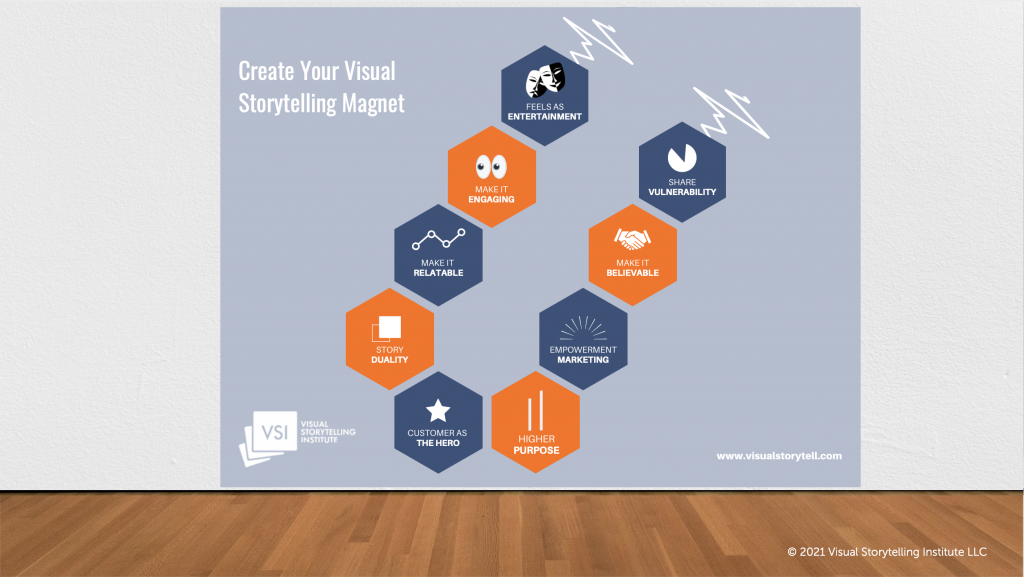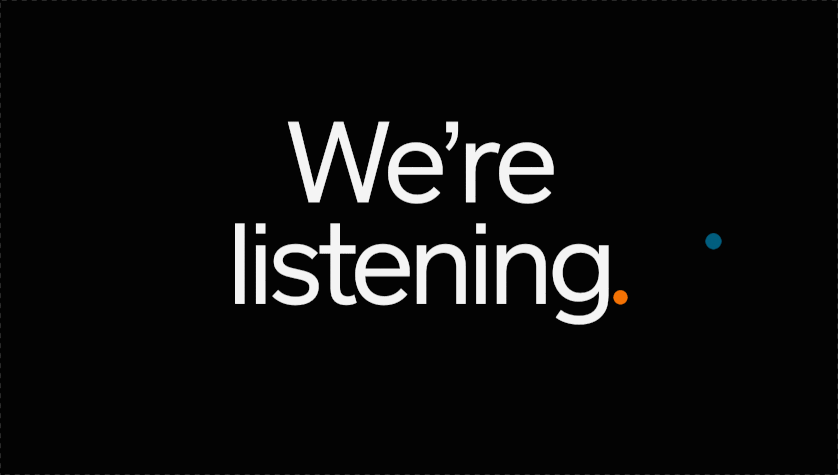With a new year comes a new hope.
After a challenging 2020, businesses and brands are looking for new ways that will help them to make 2021 better. Since the pandemic, visual storytelling has been on the rise. Businesses noticed the role visual communication played in educating both the public as well as their customers.
The emergence of e-commerce among traditional business models is also rising to cope with the changing landscape, increasing the use of visual storytelling. Simultaneously, technologies like virtual reality (VR) and 360-degree videos are being used more frequently for marketing.
How can businesses and brands grow their impact by 2030? What role will visual storytelling play in it?
In our first #PiktoWebinar of the year, we spoke with the CEO of Visual Storytelling Institute (VSI), Shlomi Ron, to discover how visual storytelling will shape the next decade.
Shlomi is a seasoned digital marketing strategist with over 20 years of experience. Before creating VSI, he worked both on the agency and brand sides for Fortune 100/500 brands such as Nokia, IBM, and American Express. Today, he helps brands connect better with their audience through visual storytelling consulting, training, production, and thought leadership.
He also teaches Brand Storytelling at the University of Miami’s Business School and has published his own book, Total Acuity: Tales with Marketing Morals to Help You Create Richer Visual Brand Stories. Additionally, he is the host of the Visual Storytelling Today podcast, which ranks as the 20 best business storytelling podcasts on the web.
The impact of the pandemic on visual storytelling
Visual storytelling grew to become a key player in 2020 with the global pandemic. With the tremendous growth of digital transformation driven by the pandemic, the way brands tell visual stories has also evolved. Shlomi shared a few of his observations from 2020.
1. Cause Marketing
The first apparent trend is cause marketing. Brands such as the top-rated social media app, TikTok, started donating money for pandemic-related causes. Coursera, an online course provider, offered their courses for free to universities and schools to reflect their value in ensuring education continuity during the pandemic.
2. Diversifying Storytellers
Another new way for brands to tell their stories is diversification in storytellers. For example, Shlomi shared about Panera Bread, which came up with a campaign to feature their delivery drivers. This has helped Panera Bread to increase brand credibility and trust among its customers.
3. Mirroring Reality
A new way that was evident during the first wave of the pandemic, back in April, was mirroring reality. In this method, Domino’s Pizza created a spot featuring franchisees and encouraged people who lost their jobs to apply for their openings.
4. Recovery
The most recent visual story that Shlomi came across was focused on recovery. A particular one was from Heineken, who wanted to educate their customers on how to behave in a bar and how they can navigate returning to the bar while maintaining safety during a pandemic.
5. Misaligned Stories
While some brands have introduced new ways of telling stories successfully, others have unfortunately missed the mark. Shlomi points out to misaligned stories. In this method, some tactics were long emails and brands sharing the same theme, such as music style, copy, and design in light of the pandemic.
For example, there was a backlash when McDonald’s, Coca-Cola, and a few other brands spaced out their logos to visualize the aspect of social distancing. However, this wasn’t taken well by the public. Another bad example was Hershey’s spot from April 2020. It was featuring people hugging, which seemed inappropriate during the time of social-distancing.
According to Shlomi, there are many categories of upcoming visual storytelling trends that will shape 2021 and beyond. Starting with the category of story making, which focuses more on the strategy are the upcoming trends of brand narrative, diversity, and crisis storytelling.
Story making
A brand narrative is essential as a statement that sets a brand’s promise or the reason for its existence. For example, Burger King’s brand narrative is focused on “good food first” and is committed to healthy ingredients. As a result, all their brand campaigns are focused on validating this narrative and bringing it to life. Hence, a reliable brand narrative is an essential starting point as it works like a GPS to set the direction for all the brand stories.
The second trend in this category is diversity, which Shlomi believes will increase more evidently in the near future. This would go beyond the marketing department and stories from the brand’s official voice and extend to a diverse range of storytellers outside of the official voice from employees, customers, vendors, and more.
Diversity in storytelling is important because people identify with others who either look like them or who struggle through similar issues. A great example is Square with Seller Stories, which allows brands to share their stories through a voice message. This campaign is a simple execution of visual stories that exerts authenticity with brands sharing their challenges and wins.
Finally, the trend of crisis storytelling will be one to look out for. With the important lessons from 2020, brands will need to upgrade their game when it comes to both internal and external crisis management. Customers’ needs and wants change, and brands need to know how to respond to those changes. This can be accomplished by brands with pre-crisis playbooks identifying the communication strategy, people, processes, and tools that need to be activated during a crisis.
Story visualizing
The next category of story visualizing focuses on the production side of storytelling. An upcoming trend in this category is long-form content and storytelling compared to short content due to the general notion that humans have short attention spans. While that is inevitably true, there is also an increase in brands that focuses on long-form content and brand documentaries.
Some great examples are Johnson & Johnson and Patagonia Films commissioning production companies to create long-form content based on their brand stories. During the pandemic, Apple came up with The Underdogs, a short film featuring workers working from home and their challenges.
According to Shlomi, virtual is another trend, which has affected the workplace and schools with online Zoom meetings or video conferences during the pandemic. One key aspect about virtual is the background that had given a sense of authenticity and was never experienced before, such as newscasters showcasing their environment to the world.
Immersive is also an exciting and upcoming trend with a staggering statistic by Statista, which predicts that the AR and VR global market will reach $20.8 billion by 2023. This incredible growth is on the rise, with brands taking advantage of AR and 360 videos to tell their stories.
For example, The Weather Channel implemented an immersive mixed reality experience. As a result, they managed to better engage their audience beyond just charts and graphs of the weather forecast.
Story telling
Finally, the last category of story telling emphasizes the upcoming trend of big data and machine learning, which impact brands. There is an increasing need for reports to be visualized, and Shlomi expects tremendous growth in this area. An exciting example is Mailchimp’s 2020 Annual Report, which was presented as an adventure experience of a character moving around while telling the story.
The trends of fake storytelling and new distributions are connected. They have created a significant challenge for brands, especially social networks, to help consumers discern between counterfeit and real content. As a result, new distribution models will pave the way with fake storytelling from major social media networks. Brands such as Clubhouse and Dialup are on the verge of redefining social media networks.
Tips to prepare for the future of visual storytelling
Shlomi introduces his signature My Visual Story framework, which mirrors the three categories of story-making, story visualizing, and story telling.

To learn more in-depth about this framework, check out Shlomi’s visual storytelling online course.
Additionally, Shlomi’s Visual Storytelling magnet below is a practical step-by-step strategy to create engaging visual stories.

“Visual Storytelling is a marketing strategy that leverages compelling narratives, placing your customer at the heart of the story, staged with an emotional visual media experience and effectively distributed across your buyer’s journey – in order to empower customers’ lives and drive business results.”
Shlomi Ron
In conclusion, Shlomi believes that regardless of the technologies of the day, the most impactful and timeless tip for brands is to tell good and powerful stories.

We’re incredibly grateful to Shlomi for joining us in this #PiktoWebinar to share his visual storytelling expertise. If you’d like to listen to the full conversation, you can catch the on-demand webinar here.





